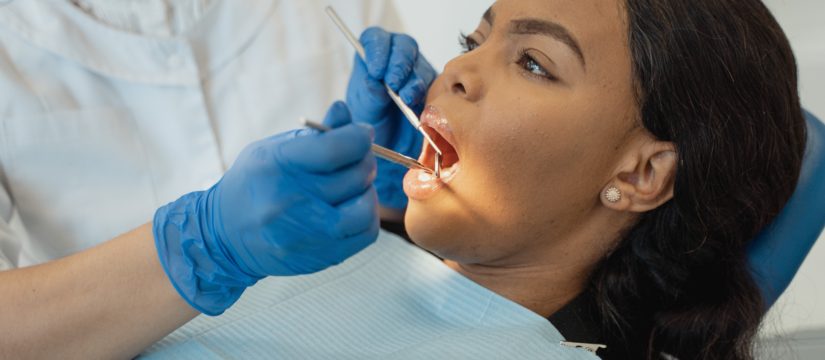
What Is Periodontal Surgery?
Occasionally, Periodontal Surgery may be required to treat certain gum diseases and conditions, such as gingivitis or periodontitis. This type of surgery is commonly known as gum surgery.
The purpose of this procedure is to treat gum disease and any damage caused by it:
- Regrowing damaged bones and tissues
- Preventing tooth loss
- Reducing gum gaps between teeth, known as black triangles
- Reshaping the jaw hone to lower the risk for bacterial growth in bone crevices
- Eliminating bacteria and infection
If you have a severe gum infection, known as periodontal disease, your dentist may recommend surgery.
Who Is A Good Candidate?
People with severe or advanced diseases around their gums and the tissue supporting their teeth are usually candidates for periodontal surgery.
If you have gum disease, your symptoms may include:
- Gums that are swollen, red, or bleeding
- Deep pockets between your gums and teeth
- Loose teeth
- Pain when chewing
- Bad breath
- Gums that move or pull away from their teeth
Your doctor will tell you if you can benefit from periodontal surgery. If your gum disease is not advanced, your dentist may suggest a more conservative treatment approach.
Periodontitis is a more serious form of gum disease, in which gingivitis worsens, causing an inflammatory reaction that destroys bone and tissue.
During this inflammatory process, the gums begin to separate from the teeth. This develops spaces called pockets, which replace the trap bacteria and cause infection.
As a result, tooth loss and bone damage may occur.
Types Of Surgical Procedures
The type of surgery a dental surgeon performs depends on the type and severity of gum disease.
Before surgery, a dental surgeon may give the gums a deep cleaning. A process known as deep scaling can remove tartar and bacteria from teeth and gums.
Another process known as root planning can lubricate the root surfaces of teeth, meaning that there are fewer places for tartar and bacteria to form. This process also removes any tartar present at the root.
Deep scaling and root planing usually occur at the same time.
Flap Surgery
Flap surgery is particularly helpful for those who have tartar deposits in deep pockets. The procedure involves lifting the gums from the teeth to remove tartar buildup.
After the surgeon cleans the area and removes the tartar, they will stitch the gums to fit around the teeth. Sometimes, the bone may need to be re-shaped during this process.
Bone Grafting
When the bone surrounding the tooth root is damaged or destroyed, a person may need a bone graft. This process involves replacing the damaged bone with a new bone. This bone can be a person’s bone, bone produced, or donated bone.
The goal of bone grafting is to hold the tooth in place and help to reposition it.
Guided Tissue Regeneration
During this procedure, a dental surgeon will place a small piece of mesh-like material between a person’s bone and gingival tissue.
The material prevents the gum from growing in the space where the bone should be, allowing the bone and connective tissue to regain.
Tissue Grafting
A reduced gum line, known as gum line deceleration, is caused by gum tissue loss and may require soft tissue grafting to reduce the risk of further damage.
During this procedure, a dental surgeon usually removes tissue from a part of the body and reattaches it to the area where the gum has recurred. The tissue often comes from the roof of the mouth.
Tissue grafting not only reduces the risk for further damage but also covers any exposed roots.
Other Treatment Options Include:
Laser therapy: Although no current evidence fully supports laser therapy, some dentists use it to reduce the pocket size and restore damaged connective tissue.
Tissue-stimulating protein: This process involves using a gel containing protein to stimulate bone and tissue growth.
Recovery
Your recovery depends on how serious your disease is, your overall health, and the type of procedure you have. Follow your dentist’s instructions carefully.
Usually, you can expect some minor bleeding and discomfort after any kind of dental surgery. You should be able to resume several normal activities the day after your procedure
Your dentist may ask you to use a special mouth rinse or take an antibiotic after your surgery. You cannot brush or floss some areas of your mouth until they heal.
